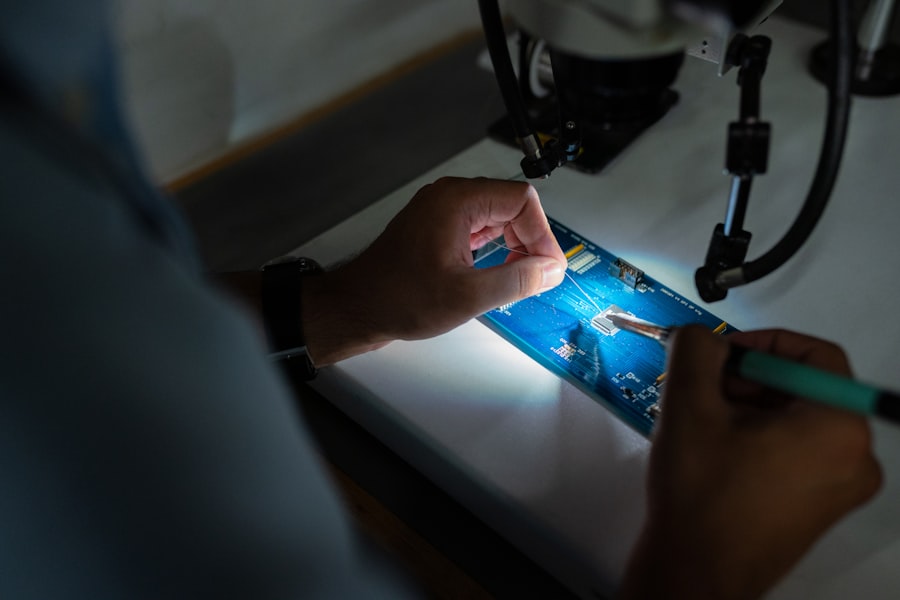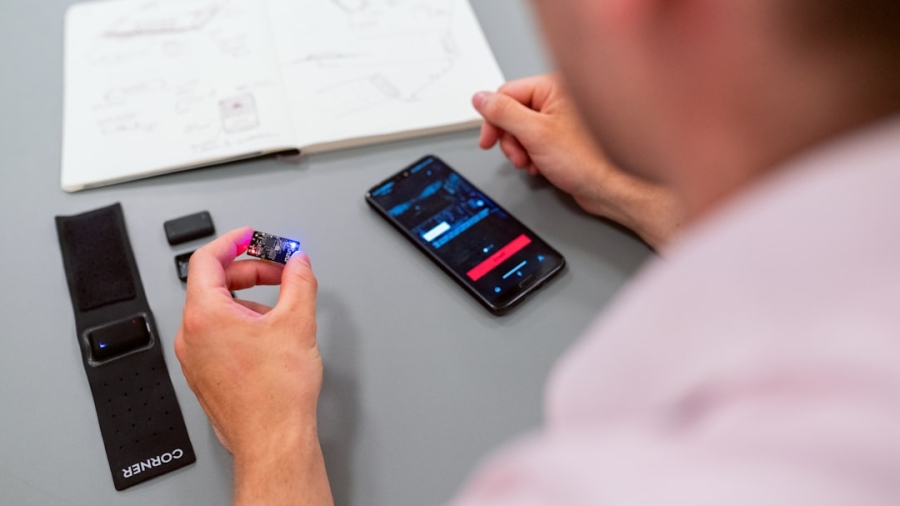Digital twins represent a revolutionary concept in the realm of technology, merging the physical and digital worlds in a way that enhances understanding, efficiency, and innovation. At its core, a digital twin is a virtual replica of a physical entity, whether it be a product, process, or system. This digital counterpart is continuously updated with real-time data from its physical counterpart, allowing for a dynamic simulation that reflects the current state and behavior of the original object.
The implications of this technology are vast, as it enables organizations to monitor performance, predict outcomes, and optimize operations in ways that were previously unimaginable. By leveraging sensors, IoT devices, and advanced analytics, digital twins provide a comprehensive view of systems, facilitating better decision-making and strategic planning. The concept of digital twins extends beyond mere visualization; it encompasses a holistic approach to understanding complex systems.
By integrating data from various sources, including historical performance metrics and real-time operational data, digital twins can simulate different scenarios and predict future behaviors. This capability is particularly valuable in industries such as manufacturing, healthcare, and urban planning, where the ability to anticipate issues before they arise can lead to significant cost savings and improved efficiency. As organizations increasingly adopt this technology, the potential for innovation and transformation becomes apparent, paving the way for smarter operations and enhanced customer experiences.
Key Takeaways
- Digital twins are virtual representations of physical objects or systems that can be used for monitoring, analysis, and simulation.
- The evolution of digital twins has seen advancements in technology and data analytics, leading to their widespread adoption in various industries.
- Digital twins have applications in predictive maintenance, product design, healthcare, and smart cities, among others.
- Advantages of digital twins include improved decision-making, reduced downtime, and enhanced product performance, while challenges include data integration and security concerns.
- The future of digital twins in Industry 4.0 involves greater integration with artificial intelligence and machine learning for more advanced analytics and predictive capabilities.
The Evolution of Digital Twins
The evolution of digital twins can be traced back to the early days of computer-aided design (CAD) and simulation technologies. Initially, these tools were used primarily for design purposes, allowing engineers to create 3D models of products before they were manufactured. However, as technology advanced and the Internet of Things (IoT) began to gain traction, the concept of digital twins evolved into a more sophisticated framework.
The integration of real-time data collection through sensors and connected devices allowed for the creation of dynamic models that could adapt and respond to changes in their physical counterparts. This shift marked a significant turning point in how organizations approached product development and operational management. In recent years, the proliferation of cloud computing and big data analytics has further accelerated the evolution of digital twins.
Organizations now have access to vast amounts of data that can be harnessed to create more accurate and detailed digital representations. This has led to the emergence of advanced simulation techniques that not only replicate physical attributes but also incorporate behavioral patterns and predictive analytics. As industries continue to embrace Industry 4.0 principles—characterized by automation, data exchange, and smart manufacturing—the role of digital twins has become increasingly central.
They are no longer just tools for visualization; they are integral components of a broader strategy aimed at enhancing operational efficiency and driving innovation.
Applications of Digital Twins

Digital twins have found applications across a wide array of industries, each leveraging the technology to address specific challenges and improve outcomes. In manufacturing, for instance, digital twins are used to optimize production processes by simulating different scenarios and identifying bottlenecks before they occur. By creating a virtual model of the production line, manufacturers can experiment with changes in real-time without disrupting actual operations.
This capability not only enhances efficiency but also reduces downtime and minimizes waste, ultimately leading to cost savings and increased productivity. In the realm of healthcare, digital twins are being utilized to personalize patient care and improve treatment outcomes. By creating a digital twin of a patient—incorporating their medical history, genetic information, and real-time health data—healthcare providers can simulate various treatment options and predict their effectiveness.
This approach allows for more informed decision-making and tailored treatment plans that consider individual patient needs. Additionally, digital twins are being employed in urban planning to model city infrastructure and services. By simulating traffic patterns, energy consumption, and resource allocation, city planners can make data-driven decisions that enhance urban living while addressing sustainability challenges.
Advantages and Challenges of Digital Twins
The advantages of implementing digital twins are manifold, offering organizations the ability to enhance operational efficiency, reduce costs, and improve product quality. One of the most significant benefits is the capacity for predictive maintenance. By continuously monitoring the condition of equipment through its digital twin, organizations can identify potential failures before they occur, allowing for timely interventions that prevent costly downtime.
This proactive approach not only extends the lifespan of assets but also optimizes maintenance schedules based on actual usage rather than predetermined intervals. However, despite their numerous advantages, the adoption of digital twins is not without challenges. One major hurdle is the complexity involved in integrating various data sources into a cohesive digital model.
Organizations must navigate issues related to data quality, interoperability between systems, and the need for robust data governance frameworks. Additionally, there is often a significant upfront investment required for the necessary technology infrastructure and training personnel to effectively utilize digital twin capabilities. As organizations weigh these challenges against the potential benefits, it becomes clear that a strategic approach is essential for successful implementation.
As we look toward the future, digital twins are poised to play an increasingly pivotal role in the ongoing evolution of Industry 4.0. This new industrial revolution emphasizes automation, data exchange, and smart technologies that enhance productivity and innovation across sectors. Digital twins will serve as foundational elements in this landscape by enabling organizations to create interconnected ecosystems where physical assets are seamlessly integrated with their digital counterparts.
This integration will facilitate real-time monitoring and control over complex systems, leading to more agile operations that can quickly adapt to changing market demands. Moreover, as technologies such as artificial intelligence (AI) and machine learning (ML) continue to advance, the capabilities of digital twins will expand even further. These technologies will enable more sophisticated simulations that can learn from historical data and improve predictive accuracy over time.
The result will be an unprecedented level of insight into operational performance and customer behavior, empowering organizations to make informed decisions that drive growth and innovation. As industries embrace this transformative potential, digital twins will undoubtedly become essential tools for navigating the complexities of modern business environments.
Artificial Intelligence and Machine Learning in Digital Twins
Enhanced Predictive Capabilities
By leveraging AI algorithms, organizations can analyze vast amounts of real-time data generated by physical assets, identifying patterns and trends that may not be immediately apparent to human operators. This capability allows for more accurate forecasting of equipment performance and potential failures, enabling organizations to implement proactive maintenance strategies that minimize downtime.
Informing Decision-Making Processes
AI-driven insights can inform decision-making processes across various levels of an organization. For instance, in manufacturing settings, AI-enhanced digital twins can optimize production schedules by predicting demand fluctuations based on historical sales data and market trends.
Unlocking New Possibilities
In healthcare applications, AI can analyze patient data within digital twins to recommend personalized treatment plans tailored to individual needs. As these technologies continue to evolve, the synergy between AI/ML and digital twins will unlock new possibilities for innovation across industries, driving efficiency and improving outcomes in ways previously thought unattainable.
Cybersecurity and Privacy Concerns in Digital Twins

While the benefits of digital twins are substantial, they also raise important concerns regarding cybersecurity and privacy. The interconnected nature of digital twins means that they rely heavily on data exchange between physical assets and their virtual counterparts. This connectivity creates potential vulnerabilities that malicious actors could exploit to gain unauthorized access to sensitive information or disrupt operations.
As organizations increasingly adopt digital twin technology, it becomes imperative to implement robust cybersecurity measures that protect both the data being transmitted and the integrity of the digital models themselves. Moreover, privacy concerns arise when personal data is involved in creating digital twins—particularly in sectors like healthcare where patient information is sensitive. Organizations must navigate complex regulatory landscapes while ensuring compliance with data protection laws such as GDPR or HIPAThis necessitates not only technical solutions but also ethical considerations regarding how data is collected, stored, and utilized within digital twin frameworks.
Striking a balance between leveraging data for innovation while safeguarding privacy will be crucial as organizations move forward with their digital twin initiatives.
The Impact of Digital Twins on the Future
In conclusion, digital twins represent a transformative force across various industries, offering unprecedented opportunities for optimization, innovation, and enhanced decision-making. As organizations continue to embrace this technology within the context of Industry 4.0, they will unlock new levels of efficiency that were previously unattainable. The ability to create dynamic virtual replicas that reflect real-time conditions allows businesses to anticipate challenges proactively while improving overall performance.
However, as with any emerging technology, it is essential for organizations to address the associated challenges—particularly those related to cybersecurity and privacy—to fully realize the potential benefits of digital twins. By investing in robust security measures and ethical data practices while leveraging advancements in AI and machine learning, businesses can harness the full power of digital twins to drive growth and innovation in an increasingly complex world. Ultimately, as this technology continues to evolve and mature, its impact on industries will be profound—shaping not only how businesses operate but also how they engage with customers in an ever-changing landscape.
If you’re interested in the concept of digital twins and their applications in technology, you might find the article on how smartwatches are enhancing connectivity relevant. Smartwatches represent a practical application of digital twin technology, where the physical device and its virtual counterpart can interact seamlessly to provide enhanced user experiences. This connectivity is a cornerstone of the broader implications of digital twins in various tech sectors. To explore more about how these devices integrate with our daily lives and potentially connect with digital twins, you can read the article How Smartwatches are Enhancing Connectivity.
FAQs
What are digital twins?
Digital twins are virtual replicas of physical objects, processes, or systems. They are created using real-time data and simulations to represent their real-world counterparts.
How are digital twins used?
Digital twins are used in various industries such as manufacturing, healthcare, transportation, and urban planning. They can be used for predictive maintenance, performance optimization, and simulation of different scenarios.
What is the future of digital twins?
The future of digital twins is expected to involve more advanced technologies such as artificial intelligence, machine learning, and the Internet of Things (IoT). This will enable more accurate and dynamic representations of physical objects and systems.
What are the benefits of digital twins?
Some of the benefits of digital twins include improved operational efficiency, reduced downtime, better decision-making, and the ability to test and optimize processes in a virtual environment before implementing them in the real world.
Are there any challenges associated with digital twins?
Challenges associated with digital twins include data security and privacy concerns, the need for interoperability between different systems, and the complexity of integrating real-time data into the virtual models.

